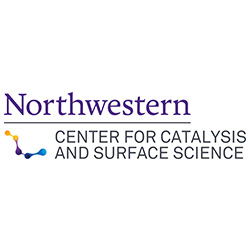CCSS Monthly Meeting: Prof. Do Heui Kim, Seoul National University

When:
Friday, August 16, 2024
12:00 PM - 1:00 PM CT
Where: Technological Institute, LR 251, 2145 Sheridan Road, Evanston, IL 60208 map it
Audience: Faculty/Staff - Post Docs/Docs - Graduate Students
Contact:
Kamila Cajiao
kamila.cajiao@northwestern.edu
Group: Center for Catalysis and Surface Science (CCSS)
Category: Lectures & Meetings, Academic, Environment & Sustainability
Description:
Who: Professor Do Heui Kim, Seoul National University, Republic of Korea
When: August 16, 12:00-1:00pm
Where: Technological Institute | LR 251 | Attend virtually via Zoom
Lecture Abstract: "Novel NH3 selective catalytic reduction (SCR) catalyst for stationary application"
Nitrogen oxides (NOx) are a pollutant present in combustion gases that have serious deleterious effects on the human body, and these species also participate in photochemical processes that result in smog and acid rain. Nevertheless, NOx can be efficiently removed from exhaust gases by implementing selective catalytic reduction with NH3 (NH3-SCR). TiO2-supported vanadia catalysts are the most common materials used in NH3-SCR processes since they offer excellent denitrification ability and high sulfur resistance, in the temperature range from 300 to 400 °C. However, as environmental regulations become more stringent and applied to various fields in the future, the necessity of operating SCR at low-temperature below 250 °C becomes more important. Although it is known that V-based catalysts have relatively high sulfur resistance, they are not free from sulfur deactivation below 250 °C due to the formation of ammonium bisulfate (ABS), which can physically block the pores in the catalyst, deteriorate the catalytic performance. This study will demonstrate a simple but novel “physical mixing” strategy to achieve excellent sulfur resistance of the vanadia NH3-SCR catalyst with high NOx removal ability at low temperature.
Speaker Bio:
Prof. Do Heui Kim is currently a full professor in Department of Chemical and Biological Engineering at Seoul National University. After obtaining PhD in Chemical Engineering at Korea Advanced Institute of Science and Technology in 2000, he joined Prof. Harold Kung’s group as a postdoctoral fellow at Northwestern University. He worked as a senior research scientist at Pacific Northwest National Laboratory (PNNL) from 2002 to 2011, when he took the current position. His work has focused on the application of heterogeneous catalyst to solve the energy and environmental issues, such as catalytic activation of light alkane and biomass to produce value-added products, and catalytic elimination of vehicle exhaust gases (NOx, CO and hydrocarbon). He has published about 240 scientific papers.
About the Center for Catalysis and Surface Science
The Center for Catalysis and Surface Science (CCSS) monthly meetings host speakers, as well as provide tutorials, research updates and facilitate team collaboration.
The mission of the Center for Catalysis and Surface Science (CCSS) is to promote interdisciplinary research fundamental to the discovery, synthesis, and understanding of catalysts and catalytic reactions essential to modern society. As a part of the Paula M. Trienens Institute for Sustainability and Energy, CCSS applies fundamental advances in catalysis science towards applications in alternative fuels, abatement of harmful emissions, resource recovery concepts, new processing routes, and many other strategies towards making chemicals more sustainable.